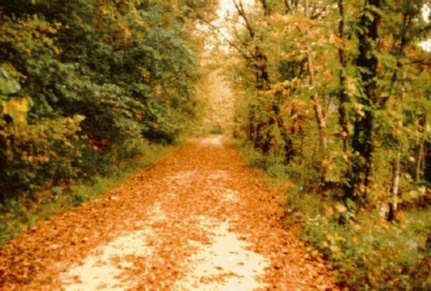The Great Moccasin Migration:
A Ritual of Fall and Spring

Take a trip with me! - to the lowlands of southern Illinois and visit one of the northernmost haunts of the Cottonmouth, or Water Moccasin. The late Raymond Ditmars starts off the narration as we witness the ritual migration to and from the winter dens.
"In company with Marlin Perkins, Curator of Reptiles of the Zoological Gardens of St. Louis, the author found the moccasin abundant in swampy canyons in Illinois, near Murphysboro, which is close to seventy five miles north of the convergence of the Ohio with the Mississippi and situated in the Ozark mountains..." Raymond L. Ditmars, Snakes of the World
"Extending upward from the canyons are great, shattered ledges of limestone and among these are extensive rattlesnake dens. Water moccasins were commonly observed well up in the hills among the ledges in company with timber rattlesnakes. They hibernate with the rattlers in these rocky places and even in summer are to be found among the rocks, apparently ascending to such places for the young to be born, as the latter were found in typical rattlesnake dens." - Ditmars
"A chill is again descending upon the woods at night. This is particularly apparent when the nights are still - when no breeze is stirring. On such nights there is a very heavy dew bringing into sharp evidence the webs of spiders which spin in the grass...here the snake is guided by an influence as remarkable and inexorably systematic as the autumnal migration of birds..." - Ditmars
"It may be two miles from the den when the seasons start to turn. Separating it from its goal may be marshes, undulating brooks, labyrinths of stone and tangles of vegetation. The force which appears to guide it is sense of direction. What else could there be? The topography of the ground produces hills and canyons. The vegetation is the equivalent to sightless jungle. The rocks present mazes of passages, but the serpent steadily works toward the den where it parents have hibernated for years, where their ancestors have hibernated, and their ancestors back for hundreds, and possibly much longer periods of years..." - Ditmars
"A typical den is on the southerly slope of a hill or mountain of ledgy character. There may be a precipitous face of rock and at the bottom a jumbled mass of great fragments weighing tons. The spot denotes cataclysmic forces in action in dim ages past. Such forces have shattered the face of the cliff and among these shattered portions is a crevice at the bottom, or there may be several adjacent crevices. These form the den." - Ditmars
Here on the western edge of the Shawnee Forest, the annual fall migration to the bluffs begins in late September. As the nights grow cold, snakes slide out of the swamps and head east towards the bluffs, back to the same deep crack where they waited out last winter, back to the place of their birth. For thousands of years this ritual has taken place here in the fall, and again in the spring. The Snake Road, running along the base of the bluffs in places, allows humans to witness this ancient movement.





